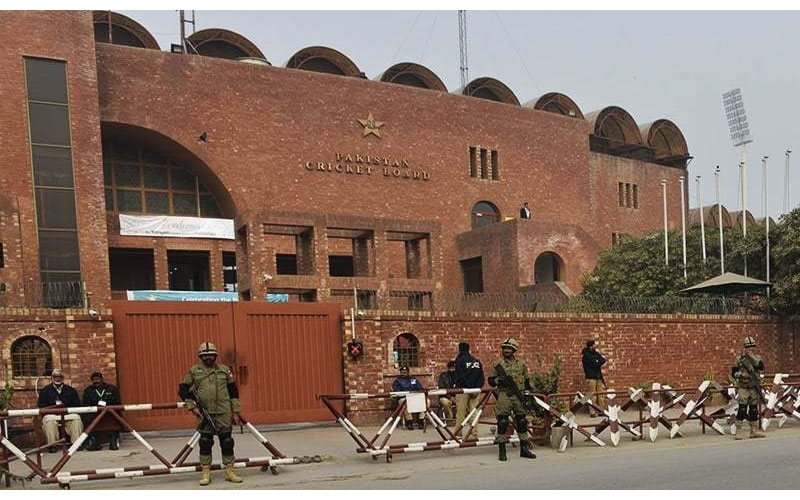ISLAMABAD:
The power sector has continued to bleed as the circular debt pile swells without any check. Though successive governments have attempted to find workable solutions, yet success has eluded them for years.
The Pakistan Tehreek-e-Insaf (PTI) government, which remained in power from August 2018 to April 2022, left unsettled Rs1.6 trillion in circular debt. The debt accumulated to Rs3.3 trillion during the government of Pakistan Democratic Movement (PDM) – a coalition of big and small political parties – which came to power after the PTI administration stepped down.
Subsequently, the caretaker setup encountered a circular debt of Rs3.5 trillion during its short tenure ahead of general elections. Now, Prime Minister Shehbaz Sharif-led government is projecting that power distribution companies (DISCOs) may incur a further loss of Rs589 billion in the current fiscal year ending June 2024.
Is there a magic wand to resolve this debt problem. The answer, unfortunately, is no, say experts while pointing out that the government is currently exploring varying options such as privatisation, outsourcing operations or handing over the struggling DISCOs to provinces. Throughout this saga, DISCOs are blamed as the primary culprit, which have obstructed efforts to tackle the challenge. While solar energy is widely acclaimed as a viable solution, these companies are lobbying to stymie efforts aimed at executing the net metering plan.
The real problem
The power sector has long been plagued by a host of challenges, with the major ones being electricity theft, company inefficiency and poor governance. Another problem that afflicts the sector is the inundation of power plants, the experts point out.
Since the Pervez Musharraf’s rule, successive governments have installed power plants without conducting proper due diligence and have given priority to thermal electricity over hydroelectric power. While two major dams – Tarbela and Mangla – were constructed decades ago during President Ayub Khan’s tenure (1958 to 1969), since then the country has not been able to build any such major reservoirs. Instead, many thermal plants, powered by fossil fuels, have been set up.
Though Pakistan’s installed power generation capacity surged from 19,566 megawatts in 2007-08 to over 41,000MW in 2023, consumers are hesitant to purchase electricity as tariffs go sky-high.
The base electricity price shot up from Rs16 per unit during the PTI tenure to Rs30 per unit under the PDM government. Now, DISCOs are seeking a further tariff hike of Rs5 per unit. To cope with the surging cost of electricity, many consumers have opted for the solar net metering system.
Experts recall that the power sector had been unbundled in line with the commitment to the World Bank while DISCOs were to be privatised. However, after splitting the companies, different governments did not relinquish control of DISCOs, where the situation has gone from bad to worse.
Now, the government is in a fix how to address the challenge. These companies are stated-owned and therefore they are preferred by the government while the plight of consumers is ignored.
As the companies book high losses with low bill recoveries, provinces are not willing to take over their management control and even investors seem hesitant to invest in them, who are deterred by their huge liabilities.
Poor energy mix
A significant factor contributing to the high electricity cost is the unfavourable energy mix, caused by the failure of successive governments to enhance the sector’s efficiency and increase the production capacity of hydel and renewable energy.
Hydroelectric power’s share used to be around 60% or above until the year 1991 but it has now dropped to 29% because of the lack of interest and consensus on building new dams.
On the contrary, the share of thermal generation has increased to about 50% as governments increasingly focused on setting up liquefied natural gas (LNG) and imported coal-based power plants.
Imported fuels have continued to dominate with LNG gradually acquiring a larger slice since the beginning of its imports in 2015 under the Pakistan Muslim League-Nawaz (PML-N) government, which neglected the indigenous gas production that could have lowered the electricity cost, the experts contend.
Also, the PML-N administration facilitated the establishment of imported coal-fired power plants under the China-Pakistan Economic Corridor (CPEC).
Investment in infrastructure
While different governments have utilised resources for setting up new power plants, they neglected critical investment in the distribution and transmission infrastructure.
Consequently, the country now boasts a large installed power generation capacity exceeding 41,000MW but the transmission infrastructure struggles to supply more than 26,000MW. In this scenario, consumers are compelled to bear higher capacity payments due to lower electricity consumption and infrastructure constraints.
Experts point out that faulty agreements with power plants, featuring “take-or-pay” clauses, have contributed to the exorbitant capacity charges. An inquiry report reveals that power producers have pocketed Rs1 trillion from consumers in the face of such agreements.
Soaring losses
The substantial losses, estimated at up to 40%, booked by DISCOs have led to a sharp increase in consumer tariffs. Initially, the National Electric Power Regulatory Authority (Nepra) allowed recovery of 12.5% losses from consumers, but later the regulator revised the benchmark to 15% through tariff hikes.
Governance issues have also dented the performance of power companies, which have frequently seen appointments of politically connected CEOs and directors in utter disregard of merit policies.
Boards of directors have persistently failed to draw up policies to improve the efficiency of companies. Despite warnings from development partners like the Asian Development Bank and the World Bank, little has been achieved as losses could not be brought under control.
Experts stress that the power sector’s challenges require holistic solutions where the government must put a cap on establishing new plants, prioritise solar energy and address governance challenges to mitigate losses and slash the circular debt.
Published in The Express Tribune, May 17th, 2024.
Like Business on Facebook, follow @TribuneBiz on Twitter to stay informed and join in the conversation.


 Technology6 مہینے ago
Technology6 مہینے ago
 Pakistan7 مہینے ago
Pakistan7 مہینے ago
 Sports6 مہینے ago
Sports6 مہینے ago
 Pakistan6 مہینے ago
Pakistan6 مہینے ago
 Entertainment6 مہینے ago
Entertainment6 مہینے ago
 Sports5 مہینے ago
Sports5 مہینے ago
 Pakistan7 مہینے ago
Pakistan7 مہینے ago
 Pakistan6 مہینے ago
Pakistan6 مہینے ago










